Our yard—front and back—is a curious place, located at a cultural and environmental crossroads. Depending on one’s point of view, our yard is a treasure, an eyesore, an oasis of biological diversity, a blight on the neighborhood, something to be celebrated in the local press (this has happened), or something to be reported to the local authorities for code violations (this has also happened).
Ah, the times they are a’changin’, but sometimes it feels like they are a’changin’ awful slow.
The decision to dedicate a yard to native plants, rather than turf-grass, is a decision with many facets. One the one hand, we have said goodbye to fertilizers, frequent waterings, hours of mowing, soil aeration and those little yellow signs informing the world that our yard is a toxic place after being treated for weeds and/or critters. On the other hand, we have said hello to lots of variety in plant, insect, bird and other life. We have greeted a different type of yard maintenance, as a switch occurred from encouraging one kind of plant to grow so we could mow it, to keeping exuberant growth from taking over completely. There is a loss of control involved in letting natives do their thing. Indeed, that is a big part of the fun, but a native yard is NOT a maintenance-free yard, at least in the city, and if anyone says it is they don’t have one. The truth of the matter is that we spend more hours working in our native yard than we ever did in our turf-grass. The good news is that we enjoy it way more.
And that’s one cool thing about our yard full of natives—we spend a lot of time out there, because, well, there’s a lot to see and do, what with about 150-plus Missouri native plants (aka “weeds” to some) and their associated retinues of pollinators and other inhabitants (aka “bugs and pests” to some).
Part of that time is spent thinning and pruning, but more is spent watching and recording, as life marches along its seasonal route and old friends come and go.
This is in stark contrast to almost everywhere else within walking distance in our part of town, where it is extremely unusual to see anybody out in their yards at all, unless they are mowing, and even that is more and more done by lawn service professionals. We can literally walk a couple miles along the surrounding streets and not see another soul, except for people in cars and other walkers on the sidewalks, even on weekends. The yards appear deserted (but well kept!). An visitor from another planet could be excused for thinking that this region was uninhabited, except for the streets and sidewalks.
The decision to go native takes, or should take, some thought. It may not even be an option for those living under the wise and benevolent protection of a homeowner’s association, where every detail of what a yard is may be specified in excruciating legalese. But barring that, there are still considerations.
We, for example, live in a nice, conventional neighborhood with green , well-kept lawns all around, which is to say our yard sticks out like the proverbial sore thumb. Fortunately, we have tolerant neighbors who are truly nice people, and we live in a city with a fair amount of tolerance of its own. This is not to say that all of our neighbors LIKE our yard, but they do accept it gracefully and remain friendly, and this is a wonderful thing for which we are grateful.
There is a dynamic that must take place when “cultures” collide, of course. As members of a neighborhood, we must be aware of such things as property values—our neighbors’ more than our own, truth be told. If our native yard becomes too “weedy”, for example, it might signal to potential buyers that we are bad neighbors, or maybe they just don’t want to see our kind of landscaping outside their windows. This can have a real effect on the finances of nearby friends trying to sell their property. The perception of “weediness” varies, of course, along a continuum, dependent upon the viewer. Our yard may sometimes push the boundaries for many people—or not. Hard to tell.
There are other practical considerations, too. If moles, for example, show up in our little ecosystem, they will certainly not pay much attention to property lines, digging their way happily over to the neighbors’ lawns and doing their probably unwelcome thing. How do we deal with this in a critter-friendly, non-toxic yard? Do we have a responsibility or liability for damage to other people’s lawn? Dialogue might be in order, including perhaps an offer to help pay keep them under control on adjacent property.
Also, there might be times when neighbors want to use herbicides and pesticides on their own yards, as they have every right to do. Sometimes drift happens and some of our natives suffer or even die. What to do? I advise tolerance and willingness to accept some compromises for the sake of peace and harmony. After all, they may have to deal with our plants and fauna spreading into their territory, and a little understanding on both sides goes a long way. Fencing may be called for—just ask Robert Frost.
Native yards have other issues which may contribute to culture shock in the ‘hood. A yard full of natives can be gorgeous when in full bloom, filled with blossoms and alive with butterflies, bees and birds. But when the flowering stage is done for many plants, they may not seem so attractive to passers-by. They may look weedy and unkempt, and in point of fact, they probably will. But the neighbors’ yards will still look tended and neat. Their plants look perfect, unchewed and whole, because nothing eats them. They are pretty because they are purposely unpalatable to the local wildlife. Ours are breakfast, lunch, dinner and housing. They are paying taxes to the neighborhood ecology, and they can get pretty shopworn after a while. Hmmmm…..
Another thing—not everyone appreciates the abundant wildlife that accompanies native plantings, meaning mostly insects and birds, but also including squirrels, rabbits, amphibians, spiders, lizards, turtles and other citizens of the untamed world.
People passing by on the sidewalk can be intimidated by the sight of myriads of bees and wasps that hang out on the flowers, even though Nadia and I mingle with them on a daily basis, often at very close distances, and have never been stung or bothered by them.
Not everybody is convinced that leaving them alone will assure that they will leave you alone. What I mean is, not everybody is fond of bugs and critters. Some folks are downright disgusted and/or scared by them.
What to do? Nature is untidy. Nature doesn’t much care what the neighbors think or what the city regulations are. We have to do that part. So far we have not had mobs with torches and pitchforks rioting in our front yard, so we hope we’re walking an acceptable line, especially when we see walkers stop often and explore the plants, reading our labels and enjoying our little ecosystem. This seems to happen on a regular and increasing basis, and it’s fun and rewarding to talk with the passersby who like this sort of yard.
We like our yard, too, and interact with it daily. It can be hard to control and is often a lot of work, but, for us, the benefits are many. For us, it is an endlessly fascinating, always evolving, sometimes almost mystical, place. We’re keeping it.

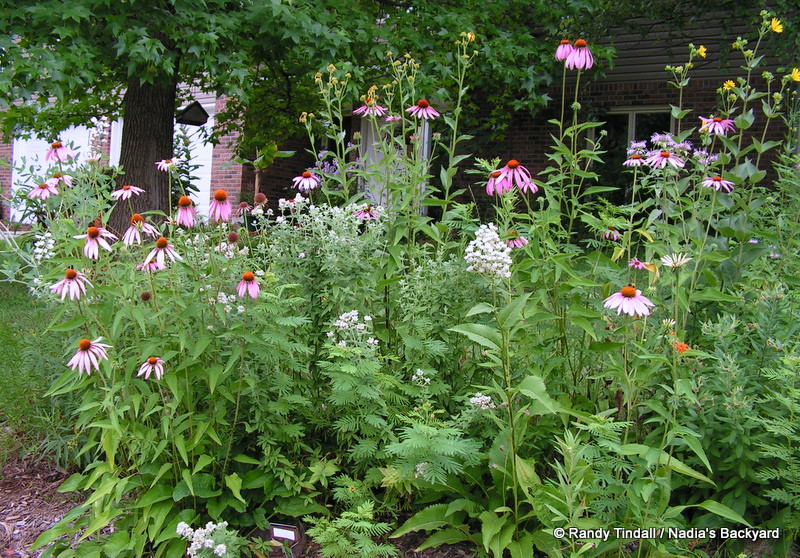
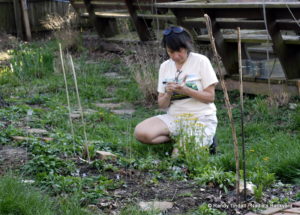

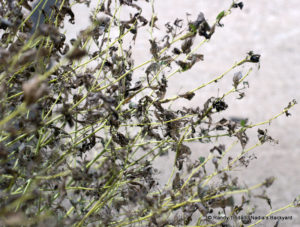
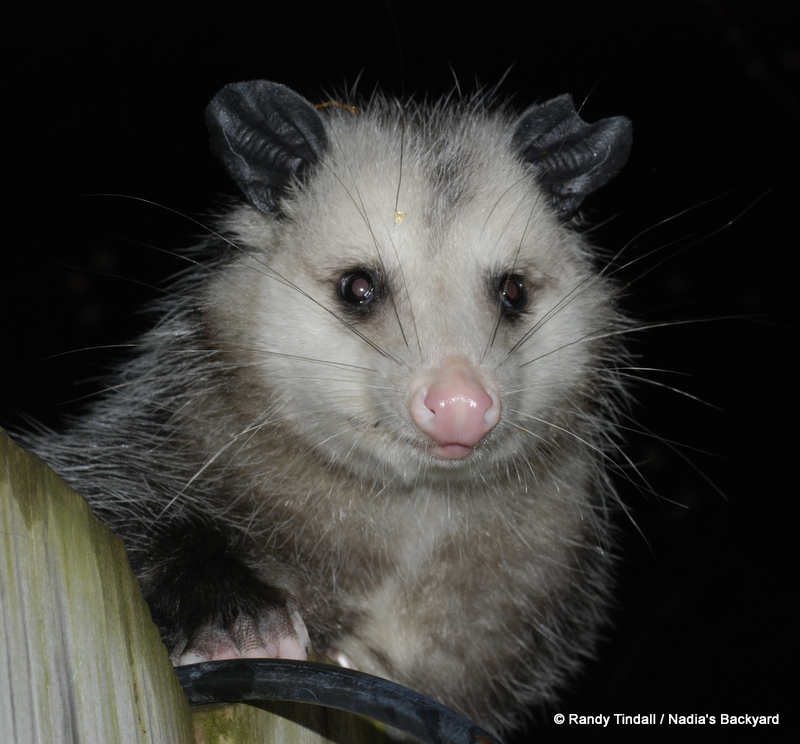
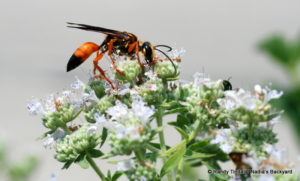

What a great idea to try to see your yard from your neighbors perspective! The fact that “Nature is untidy” is a problem. This should be required reading for anyone who’s thinking about going native.
Thanks, Henry. Nadia and I have had this discussion often.
Hi, Randy and Nadia,
Thanks so much for this post! I just discovered your blog. I live on 4 acres in the mid-atlantic region. We bought our house about three years ago. We have woods, turf, and an abundance of garden beds which were mostly very randomly and messily planted. I have been working hard the past couple years to empty the beds and plant natives and some cultivars, too. I’ve actually been amazed at how much more organized our yard looks! There are lots of native plants that easily replace the non-natives. We have beautiful flowering bushes, perennials that don’t sprawl much, and really lovely grasses. I was excited to learn that the native grasses don’t have to be divided. They also don’t have their middle die out as they mature. I think that natives can be planted in a way that would keep the homeowners association happy. I do agree, as you said, that a native garden is not a carefree garden. Luckily, I love mine, and the work is really enjoyable. There is also another benefit to planting natives: Right now I’m waiting for our Elderflower bushes to bloom so that I can make Elderflower Cordial. We planted some Pasture Roses this spring. I can’t wait to try using the hips for tea or jelly.
Do you guys have any other blogs on native plants that you recommend? I can’t get enough.
That’s great that you’re enjoying your switch to natives! Nadia and I have been working in our yard quite a lot this year and, while I wouldn’t exactly call it organized, we’ve so far avoided any complaints. One thing we do is use labels to identify many of our natives to passers-by, and sometimes I even take some photographs, laminate and label them and make them into a sign to point out something interesting, like a shrub full of walking sticks or monarch eggs on our milkweeds. People really seem to enjoy this. Keep it up and thanks for reading!
I pursue an intermediate approach. I mow my lawn when I feel it needs it, but do little else. The end result looks a lot like other people’s lawns from a distance, but up close is much more diverse and interesting, and full of (what I assume are) native species. So I get to be both lazy and ecologically responsible!
Why not? There are an unlimited number of ways to introduce natives, from not doing it all to going all out. In between is fine and waayy better than nothing. Thanks for reading!
I’m doing something similar in my Chicago neighborhood. I have a dear neighbor who yesterday told me my magnificent volunteer mulleins, which can reach 5′ tall and have a cactus-like appearance with a large conical flower at the top, “is a weed.” But I have the advantage of having taken over a absent-landlord property when I bought it an moved in a decade ago, so overall the improvements are appreciated. One thing I try to do is give everything a neat edge, which I’ve accomplished with rocks and continuous trimming. So far, so good.
Good for you! If you would be interested, I’d be happy to post a guest column by you about your experiences. Maybe we can get more success stories from people who are going native. Thanks for planting natives and reading!
Another use for mullein, aka “cowboy toilet paper”
https://bygl.osu.edu/node/1478
Okay, I can imagine that. I’m trying not to, but I can.